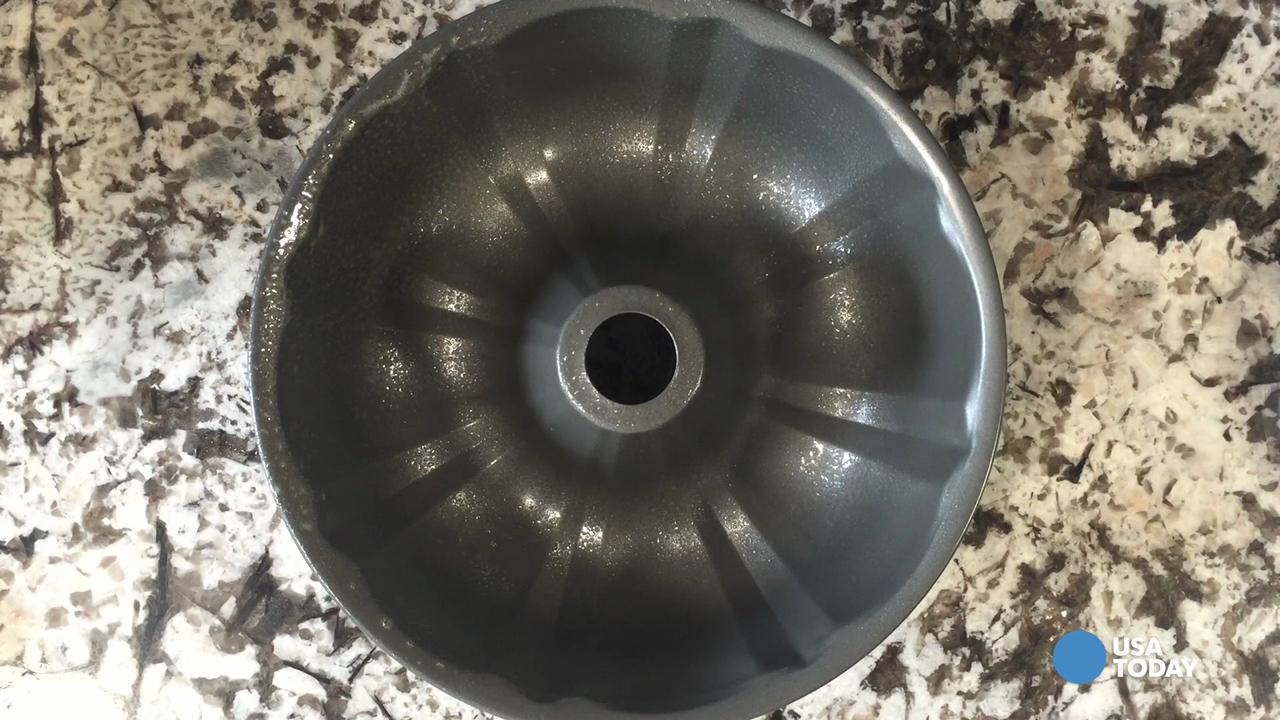Viral food videos mask the joy of cooking

NEW YORK — I was supposed to be nearing my "oh, yes" moment, that gleeful exclamation that punctuates every BuzzFeed Tasty video, when the cheese oozes and the Nutella drips salaciously and frosting comes spilling off of slices of cake.
Instead, I swore. "F---, it's so hot!," became my coda to an hour of attempting to replicate chocolate cream cheese-stuffed monkey bread. The balls of dough burned my fingers as I tried to pull one apart for the camera, only partially revealing a gooey center before practically chucking it back onto the plate.
On screen, time-lapse cooking videos make mesmerizing art of otherwise time-consuming cooking projects, belying the all-at-once methodical, soothing, frustrating and sometimes painful process that comes with making yourself a meal at home. In real life, dishes don't go from nothing to done in 60 seconds, and they may claim a finger or two along the way.
I decided to bring the monkey bread recipe to life after writing about why these recipe videos have captured our collective attention, creating virtual cookbooks out of Instagram accounts and Facebook feeds. I wanted to participate in the phenomenon as more than a viewer, to see if I could unlock what makes the recipes from brands like Tasty and Tastemade so irresistible.
My mom had posted the monkey bread Tasty video on my Facebook wall in September, prompting oohs and aahs from my sister and me. And then we moved on. All three of us are avid cooks. None of us decided the sticky bread was worthy of bringing into the kitchen.
Part of that is by design. The videos are enjoyable because you don't have to do any cooking to feel satisfied. But at the same time, the people behind these videos want their audiences to feel like they could make the dishes at home.
"We want to position cooking at this natural act, this thing that anyone can do, and we also really want to get people excited about cooking," says Andrew Gauthier, executive producer at Tasty. The evidence that the videos do just that comes in the form of photos users post in the comments, proudly displaying the result of the video brought to life. I was about to become one of them.
In full disclosure, I entered my kitchen skeptical. I am an obsessive baker and my weekly grocery planning always involves the question, "What's for dessert?"
But I shy away from gimmick food — the endless versions of cookies and pies and brownies made with Nutella or Oreos (two things that individually, I love), the miniature eclairs and muffins and cupcakes. I find that the shortcuts they encourage tend to leave my tastebuds wanting more, that a monkey bread made with homemade biscuit dough is guaranteed to be better than a version made by popping open cans of Pillsbury rolls.
But the internet doesn't have time for that. Hacks and shortcuts rule, and finding unexpected uses for ingredients people already have an affinity for is part of the recipe for cooking video success.
"That gets the brain really excited," says Oren Katzeff, head of programming at Tastemade, "when you take elements of ingredients people are familiar with and you fuse them together in a way people haven’t thought of before."
And so I forged ahead with the monkey bread plan, knowing that it's hard not to like what is essentially just sugar-drenched dough. I nestled my phone on a bed of packing tape hanging from the underside of my cupboards, giving it a bird's-eye view of my hands as I smashed dough, filled it with cubes of cream cheese and a couple chocolate chips each, rolled the balls in cinnamon sugar.
I like this part, the part the original Tasty video condensed into less than 10 seconds; it's the labor that goes into cooking and baking that turns eating from a utility into an experience, and makes sharing food with people feel special. In total, I recorded about 45 minutes of footage, 44 minutes more than the length of the original clip I followed along with. Plus, there's the 35 minutes of oven time required.
Don't let the videos fool you — Katzeff says that producing a time-lapse cooking clip takes several hours, and longer between the time his team comes up with a recipe idea and posts it to the web. Still, they create between two and four a day.
Clearly, just one was, literally, too hot for me to handle.
Gauthier would likely call my lapse into bad language a relatable moment, the same kind his team realized resonated with people after they posted a video for three-ingredient Nutella brownies that showed flour spilling out of the mixing bowl.
"We noticed immediately in the comments people saying, 'Oh, that looks like me when I’m cooking,'" he says. "There was this sense of relatability that seemed very important to people."
That sort of authenticity helps the videos create the same feeling that cooking in real life has always imparted: "the idea that somebody nice is cooking us something delicious," says Allen Salkin, author of From Scratch: The Uncensored History of the Food Network. "That's the whole key to why we like cooking videos up and down the line all the way back to Julia Child."
Now I'm wondering whether Julia would approve of stuffing Pillsbury dough with chocolate chips.
The bread came out with a caramelized crust from being soaked in a sinful mixture of melted butter and brown sugar; the cream cheese and chocolate chips melted into each other in the pockets of dough, tangy and rich on the tongue. It was tasty but the cream cheese seemed unnecessary. In fact, so did the chocolate chips. For me, simple desserts often trump Franken-food.
Would I make it again? Maybe — if I needed to bring a dessert masquerading as breakfast to a large brunch gathering. But I'd probably fill the dough with something else. Maybe Nutella.